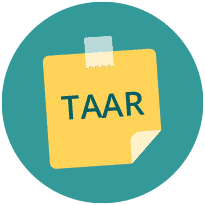Institute of Taxation’s concerns regarding company distributions

Finance Bill 2016 introduced a new targeted anti-avoidance rule (TAAR) for certain distributions of share capital made on winding up a company.
For those freelancers who close their company and restart another soon after, mainly for IR35 reasons, they will run into difficulties because of the TAAR which will treat a distribution from a winding-up as if it were an income distribution, rather than capital subject to more favourable taxation, where certain conditions are met:
- an individual (S), who is a shareholder in a close company (C), receives from C a distribution in respect of shares in a winding-up
- within a period of two years after the distribution, S continues to be involved in a similar trade or activity
- the circumstances surrounding the winding-up have the main purpose, or one of the main purposes, of obtaining a tax advantage
The Chartered Institute of Taxation (CIOT) is concerned however, that the new legislation will lead to unintended consequences, and that businesses carrying out some commercial transactions will face unnecessary uncertainty because of a lack of clarity regarding the widely drawn TAAR. The CIOT has told HMRC that the TAAR potentially catches a very wide range of legitimate commercial transactions where tax avoidance is not the motivating factor.
Unlike other significant transactions that can be firstly rubber stamped by HMRC, the TAAR does not have a formal clearance procedure, meaning that taxpayers will have to take their own decision as to whether or not the TAAR applies. With only the wording of the legislation and HMRC’s future guidance to go by, the only certainty is that there will be more uncertainty, which is something contractors have endured for over 16 years with IR35.
HMRC have said that they intend to publish their new guidance using a number of examples to demonstrate the type of transactions which they consider the TAAR should and should not apply to. The CIOT have asked that this guidance be published without delay so as to minimise uncertainty, and have also sought clarification on a number of issues, including:
Similar trade or activity
What does ‘the same or similar trade or activity’ mean? For example, if one company sold vehicle parts and another company carried out vehicle repairs, would these be similar activities? If a property investment company consisted of investing in commercial property and another invested in residential property, would these be similar businesses?
Involved
What does ‘involved’ mean, as on its own it is most vague and far reaching. Can someone be regarded as ‘involved’ with a person whom they are connected with and who is carrying on a similar business if, instead of working in that business, they provide loan finance or act as a mentor?
The CIOT have also proposed 18 credible scenarios that they believe should be addressed in the guidance, some of these being:
Example 1
An individual liquidates their company and retires but then takes on a small number of clients in retirement within 2 years of liquidation.
Example 2
A company is being wound up because the owner is retiring, but a connected person (e.g. a son or a daughter) is starting up a trade in the same line of business, but on a much smaller scale. The owner does not work for the connected person’s business.
Example 3
An individual liquidates their company but then is employed at a lower level in a similar business run by a connected person. Would it make any difference if the ongoing low-level involvement was (a) pre-planned or (b) the person retired or planned to retire but was persuaded out of retirement later to help out on a small consultancy basis?
Example 4
An individual decides to disincorporate their company for commercial reasons due to say, the business having shrunk, and then carries on the same trade as a sole trader. The individual makes a claim for disincorporation relief and winds up the company as it is no longer required. How does TAAR interact with disincorporation relief if the company is wound up?
Example 5
An individual has been involved in two similar trading companies for some time. That person liquidates one of the businesses but continues to own at least 5% interest in the other. Is it the intention that the new rules apply only to businesses which commence within 2 years of the old one ceasing or is it the intention to catch concurrent businesses as well?
Example 6
Similar to example 5, an individual has two or more businesses carrying on similar trades for many years but one is run as a company and the other as either a sole trader or partnership, e.g pubs in different locations. The company is liquidated but the individual continues with the other business.
Example 7
An individual liquidates their company but their spouse continues to hold more than a 5% shareholding in another company that carries on the same sort of activity as the dissolved company. Would it make a difference if the connected person was an adult child or another connected person, rather than a spouse? An example might be family members owning restaurants and one family member liquidating their company but another family member continuing their own restaurant business.
Example 8
An individual liquidates their company and begins carrying on a different trade, with limited success. Towards the end of the 2 year period the person is approached to participate in a new joint venture in their original field. This return to the original activity was not contemplated by either party at the time of the liquidation.
Example 9
An individual liquidates their company and retires but then helps out in their spare time in a similar business run by their spouse or other connected person.
Example 10
On the liquidation of a company, a majority shareholder chooses to wind the company up in preference to distributing its profits by way of dividend, so their actions might be regarded as tax motivated. Will HMRC take this view and how will this affect the position of the other minority shareholders who may not be tax motivated?
Example 11
A company, which has been dormant for some time and merely has a bank account with cash in it, is liquidated. Does the fact that the shareholder will have a bank account with cash in it after the liquidation amount to a similar activity?
Commenting on the new legislation, Tina Riches, Chair of the CIOT’s Owner Managed Business Sub-committee, said:
“The business community would prefer a more narrow use of the TAAR so that legitimate commercial decisions and transactions are not delayed or obstructed.
As it stands, without an advance clearance procedure, it will be crucial that clear guidance on how HMRC plan to interpret the legislation is made publically available by HMRC. This should be published as soon as possible, even if in draft, in order to minimise the uncertainty that the legislation has created.
Despite our view that having to rely on HMRC guidance is a very unsatisfactory feature of the current UK tax system, businesses need certainty about the sorts of transactions that HMRC consider are caught by the legislation.”





The Finance Bill “introduced” is in the past tense. Has this Bill been approved by parliament yet? (7/7/2016)